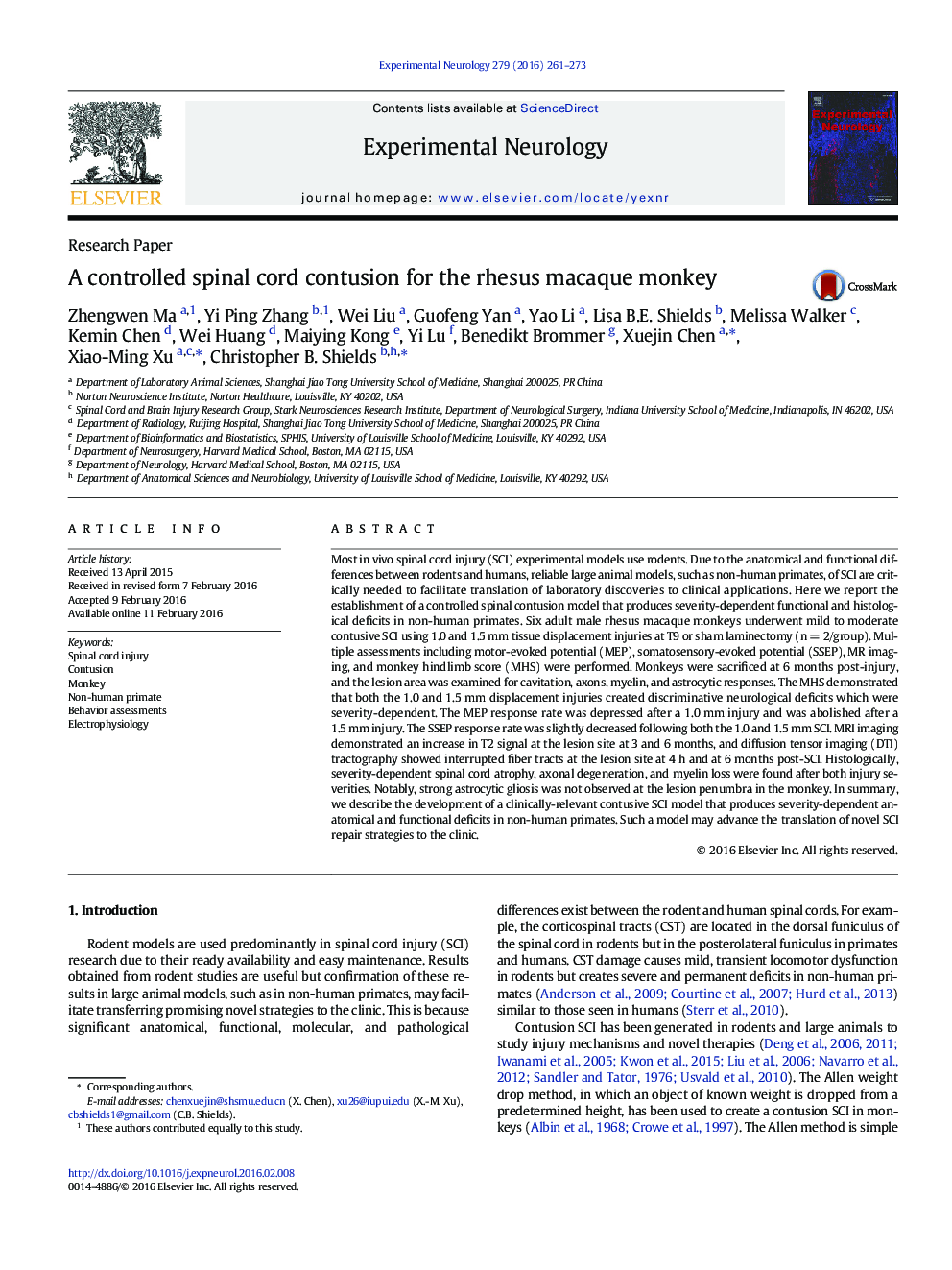| کد مقاله | کد نشریه | سال انتشار | مقاله انگلیسی | نسخه تمام متن |
|---|---|---|---|---|
| 6017058 | 1580156 | 2016 | 13 صفحه PDF | دانلود رایگان |
عنوان انگلیسی مقاله ISI
A controlled spinal cord contusion for the rhesus macaque monkey
ترجمه فارسی عنوان
کنترول طناب نخاعی کنترل شده برای میمون راس ماکائو
دانلود مقاله + سفارش ترجمه
دانلود مقاله ISI انگلیسی
رایگان برای ایرانیان
کلمات کلیدی
موضوعات مرتبط
علوم زیستی و بیوفناوری
علم عصب شناسی
عصب شناسی
چکیده انگلیسی
Most in vivo spinal cord injury (SCI) experimental models use rodents. Due to the anatomical and functional differences between rodents and humans, reliable large animal models, such as non-human primates, of SCI are critically needed to facilitate translation of laboratory discoveries to clinical applications. Here we report the establishment of a controlled spinal contusion model that produces severity-dependent functional and histological deficits in non-human primates. Six adult male rhesus macaque monkeys underwent mild to moderate contusive SCI using 1.0 and 1.5 mm tissue displacement injuries at T9 or sham laminectomy (n = 2/group). Multiple assessments including motor-evoked potential (MEP), somatosensory-evoked potential (SSEP), MR imaging, and monkey hindlimb score (MHS) were performed. Monkeys were sacrificed at 6 months post-injury, and the lesion area was examined for cavitation, axons, myelin, and astrocytic responses. The MHS demonstrated that both the 1.0 and 1.5 mm displacement injuries created discriminative neurological deficits which were severity-dependent. The MEP response rate was depressed after a 1.0 mm injury and was abolished after a 1.5 mm injury. The SSEP response rate was slightly decreased following both the 1.0 and 1.5 mm SCI. MRI imaging demonstrated an increase in T2 signal at the lesion site at 3 and 6 months, and diffusion tensor imaging (DTI) tractography showed interrupted fiber tracts at the lesion site at 4 h and at 6 months post-SCI. Histologically, severity-dependent spinal cord atrophy, axonal degeneration, and myelin loss were found after both injury severities. Notably, strong astrocytic gliosis was not observed at the lesion penumbra in the monkey. In summary, we describe the development of a clinically-relevant contusive SCI model that produces severity-dependent anatomical and functional deficits in non-human primates. Such a model may advance the translation of novel SCI repair strategies to the clinic.
ناشر
Database: Elsevier - ScienceDirect (ساینس دایرکت)
Journal: Experimental Neurology - Volume 279, May 2016, Pages 261-273
Journal: Experimental Neurology - Volume 279, May 2016, Pages 261-273
نویسندگان
Zhengwen Ma, Yi Ping Zhang, Wei Liu, Guofeng Yan, Yao Li, Lisa B.E. Shields, Melissa Walker, Kemin Chen, Wei Huang, Maiying Kong, Yi Lu, Benedikt Brommer, Xuejin Chen, Xiao-Ming Xu, Christopher B. Shields,
